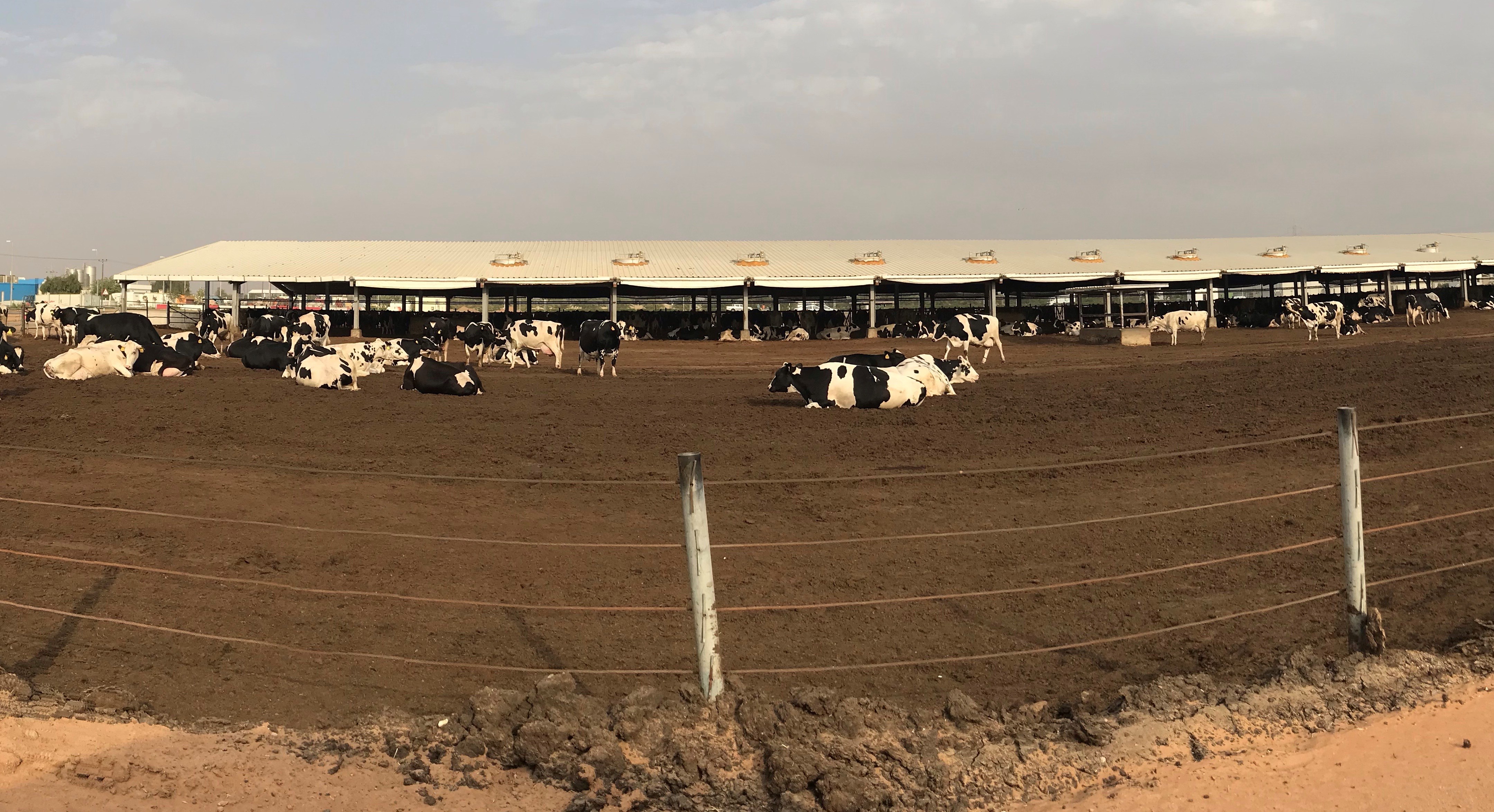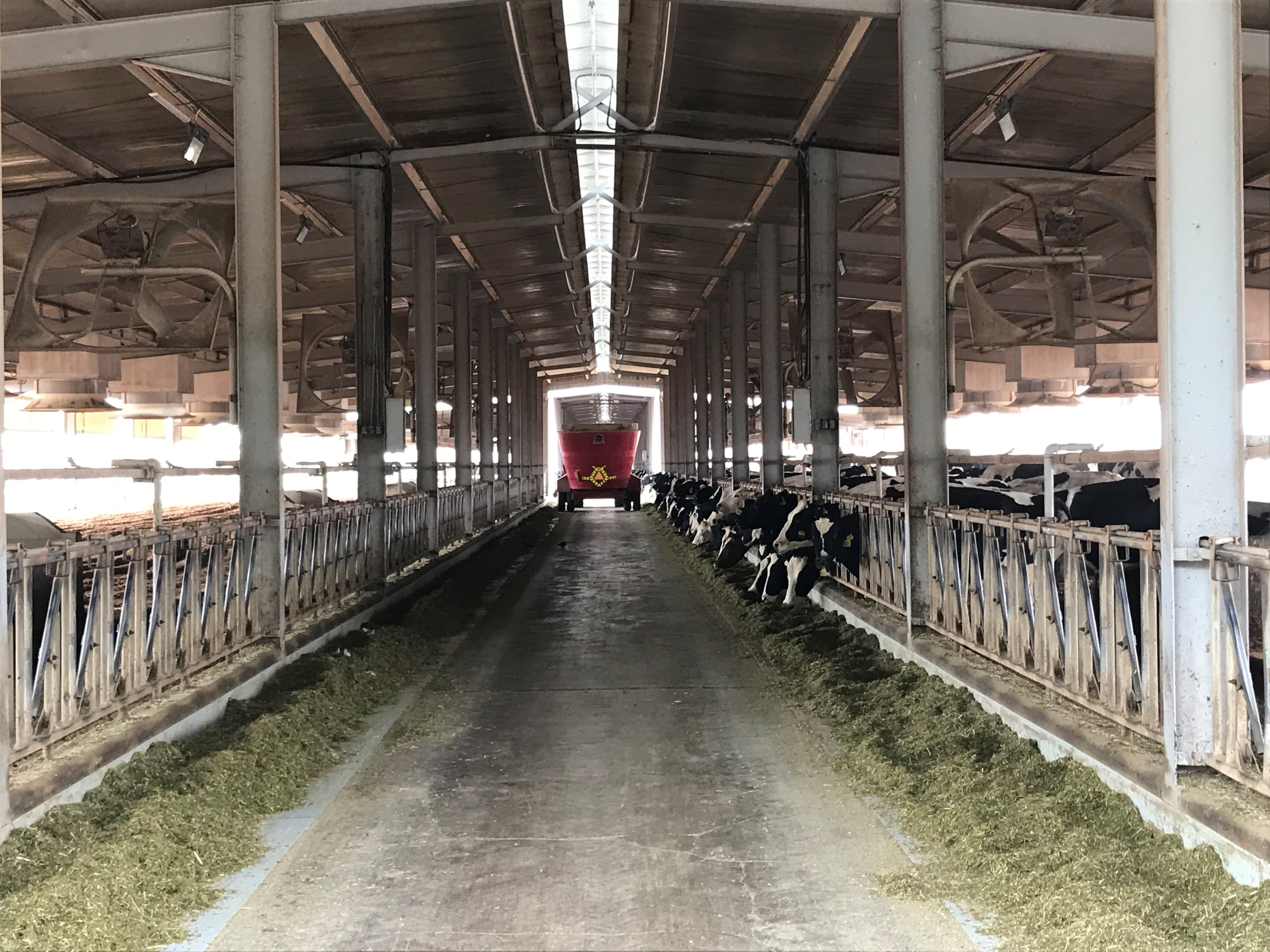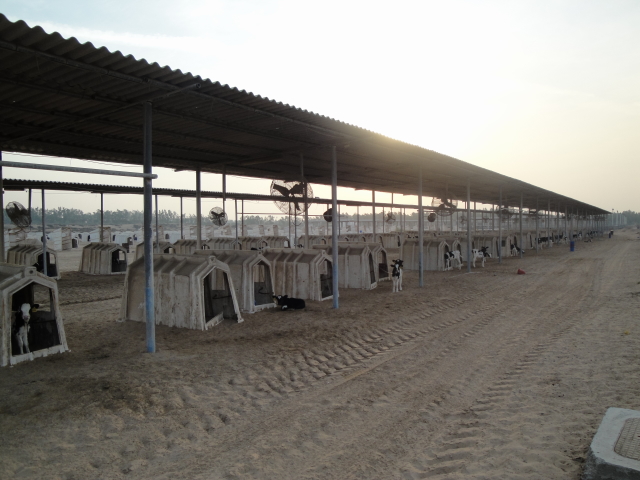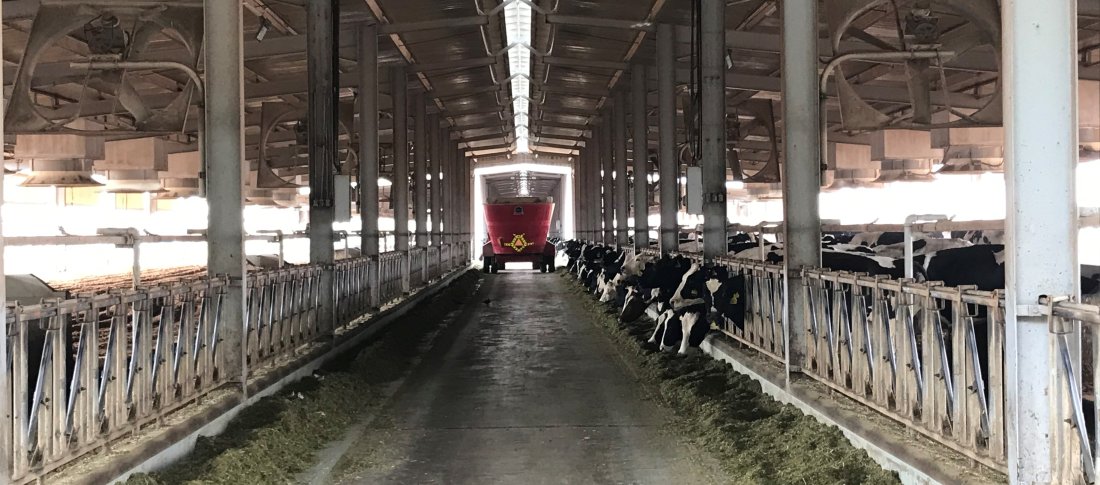Sometimes the best way to learn in farming is to look at what others are doing. And it may surprise you to know that dairy farming in Dubai is going from strength to strength. Let’s get to grips with the ABC of dairy farming in the UAE.
When you think of Dubai you think of sizzling temperatures and the soaring heights of the Burj Khalifa.
You think of well-heeled fashionistas exploring jaw-dropping shopping malls.
You think of an immaculately composed city that is fearlessly future-facing.
What you don’t think of is 42,000 dairy cows. But the growing desire for fresh dairy products in Dubai has presented the need to develop domestic dairy production instead of relying on imports.
To find out more about the UAE’s burgeoning dairy farming industry, we handed a water mister to Volac Wilmar’s Global Technical Manager, Dr Richard Kirkland, and sent him on his travels.
Where are all the farms?
You may be wondering how dairy farming fits into a city known for its skyline. But this is not a case of cow-kind mixing with the skyscrapers. You don’t have to venture far from the cloud-bothering buildings to see how successfully the vision of domestic dairy production is being implemented.
While European and American influence is common in the management of Middle East dairy farms, the strong Irish influence on dairy farms in the UAE is striking.
Richard explains:
“The largest of the UAE farms, Al Rawabi, is situated just 20-30 minutes from Downtown Dubai. This farm is a 14,000+ head unit with on-site processing and manufacturing plant. A short distance away is National Farm with cows peaking over 13,000 litres, under the management of another Gerald Kiernan from Drogheda, Co. Louth, and producing to a white-water-type contract with a minimum 3.4% fat, though no payment for milk protein.”
 Beating the heat…
Beating the heat…
The UAE is hot. Really hot. During the summer months the mercury regular scrapes past the 50oC mark. That presents unique challenges and heat stress is an ever-present threat.
Richard reveals how local farmers are protecting their herds:
“Holstein-Friesian herds with American genetics are common, with the push for increasing milk volume being the main driver. With summer temperatures reaching 50°C+, these high-producing cows are under severe heat stress for a large proportion of the year.
“The shaded corral areas are endowed with ventilating fans, typically with inbuilt water misters. Similarly, these misters are common in the feeding areas to cool cows while eating and during milking.”
Richard continues:
“The 4,200-head Marmum dairy (averaging over 11,000 litres) has a particularly impressive approach to heat management. Having recently relocated from Dubai – under the management of Co. Mayo native Ray Walsh – this ‘green field’ integrated dairy development is the first unit I have come across that’s using new desalination technology to meet their requirements for water.”
Feeding for production
Another of the major challenges in this arid region is the availability of feed. Dairies are under pressure with water usage and crops are not grown in the country due to the considerable strain on water resources required for irrigation.
How has the region adapted?
Richard says: “Forages are shipped and trucked in from other countries as far away as the USA and South America, supplemented with imported cereals and grains. Nutrition tends to centre on US-type rations with high starch intakes driving energy supply and fairly typical feed ingredients including alfalfa hay, soya bean hulls, wheat, barley, maize and cottonseed.

“Fat supplements are a key ration component in these heat-challenged areas with the low metabolic heat production offering a nutritional method of reducing internal body heat generation. Higher fat diets are critical for production of the progesterone hormone – essential for fertility.
“There’s also considerable interest in nutritional innovations based on the Michigan State University (USA) research from Professor Adam Lock. The research looked at how the more-balanced palmitic / oleic fatty acid ratio (60:30) offered by the newly-developed Mega-Max product from Volac Wilmar can improve milk yield and milk fat throughout lactation while also delivering fertility advantages.”
 Innovating to meet demand
Innovating to meet demand
Real innovation is born from challenge and limitation. And to meet the demand for fresh dairy products, dairy farms in the UAE are a little more diverse than what you would find in the UK and Ireland…
Richard explains:
“Camel milk is developing strongly in this region. The Camelicious Camel Farm has created a particularly strong brand for this vitamin C-enriched product from their 6,100+ herd.
“Al Ain dairy, with 12,000+ head (6,000 milking) of very high yielding cows, under the management of Carlow man Pat O’Dwyer, also has an accompanying 2,000-head camel unit producing for the growing camel milk market.”
Where there’s a will…
With the UAE known primarily for the opulent and rapidly-developing city of Dubai, it’s valuable to be reminded that this growing population needs an ever-increasing supply of essential nutrients.
Despite brutally harsh desert conditions, the local dairy industry has developed to provide perishable products to the local population. It’s a great lesson as to what can be achieved when there is a will to make it happen.
Anything you’d like to share?
If you have any knowledge of dairy farming in foreign climes, come and share your experiences with our dairy farming community on Facebook or Twitter.
You may also be interested in:
>> Dairying Down Under: what’s it like?
>> Dairying in Peru with VWFI Global Technical Manager
